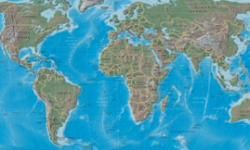It's a rainy Monday morning, and you've woken up with a tickle in your throat. You feel like an elephant is sitting on your chest, and every fiber of your body revolts against the idea of getting up and going to work. What do you do? Do you tough it out and head for the shower, knowing that you may not get much done but at least your boss will see a warm body in your cube? Or do you roll over, reach for the phone and call the big guy? When your boss answers, you moan, "I can't come to work today. I live in Sweden."
Now, your boss may not accept geographic location as a legitimate excuse for missing work. After all, companies may be particularly concerned about "sick days" taken by employees located near golf courses, ski slopes or beaches; about 40 percent of workers surveyed in 2007 admitted to taking a sick day to goof off [source: Schweitzer]. After calling in with a case of the sniffles, workers use the extra day to convert a two-day weekend into a three-day holiday, hitting the nearby mall, lake or amusement park.
Advertisement
But the amount of sick days taken in some places extends far beyond workers in sunny climes calling in "sick" to take advantage of the great weather. In Germany, for example, 18 percent of workers reported taking a sick day in a one-year period, while only 8 percent of workers in Ireland called out [source: Gimeno et al]. The amount of sick leave days that each worker takes in a year differs wildly from country to country, indicating that geographic location does seem to have some bearing on whether or not you're going to call in sick to work.
But why is geographic location a factor? Could some places be subject to more illness than others? Turn the page to find out why the average worker in Poland uses 26 sick days in a year and why workers in the United States take only five.
Advertisement


